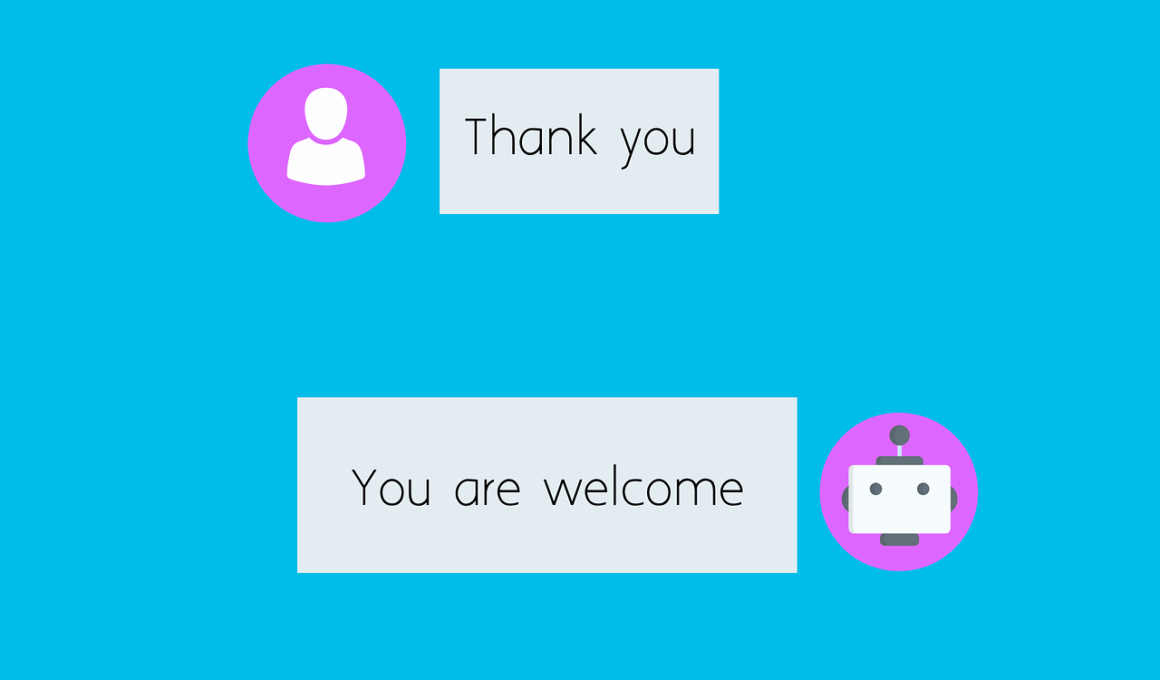Developing Effective Social Media Guidelines for Customer Service
In today’s digital landscape, social media plays a pivotal role in customer service. Establishing clear social media guidelines for customer support teams is imperative to ensure effective communication. These guidelines serve as a roadmap for addressing customer concerns across various platforms while maintaining branding and professionalism. Companies must ensure that all team members understand the policies for content moderation, response times, and the tone used in customer interactions. This includes guidelines on what constitutes acceptable communication and the process for escalating more complex issues. Each social media interaction is a reflection of the brand’s values and principles; therefore, teams should present a united front. Furthermore, the guidelines should also include responding to negative feedback and strategies for de-escalation. Transparent protocols can help in maintaining a positive brand image when issues arise. Training team members on these guidelines will further solidify their understanding and application in real-time situations, fostering better customer relationships. Implementing these guidelines ensures that customer support teams can efficiently manage communications while positively impacting customer satisfaction and overall brand loyalty.
Components of Social Media Policies
To build effective social media policies, consider key components that benefit both customers and support teams. First, establish clear communication objectives tailored to the company’s mission and goals, ensuring consistency throughout all messaging. Second, emphasize the importance of brand voice—this includes tone, vocabulary, and style that reflect the business’s personality. Outlining permissible responses is crucial; support teams must know how to handle inquiries and complaints, particularly on public platforms. This encourages a proactive approach to customer service rather than a reactive one. Third, include guidelines on handling sensitive information. Employees should avoid sharing any private data unless authorized. Furthermore, set expectations for response times to manage customer expectations effectively. Specify turnaround times for replies to messages and comments as well as potential escalation procedures for unresolved issues. Lastly, regularly review and update these guidelines to reflect changes in the social media landscape and customer needs. By developing clear policies, companies can enhance customer satisfaction while empowering support teams to engage with customers efficiently.
Equipping customer support teams with the right tools is essential for adhering to social media guidelines. Implementing management tools can streamline communication, monitor brand mentions, and analyze performance metrics. Tools such as Hootsuite or Sprout Social can assist in scheduling posts, tracking engagement, and obtaining valuable insights regarding customer interactions. These platforms provide analytics that can improve response strategies and highlight areas needing improvement. Additionally, support teams should have access to a knowledge base with FAQs, best practices, and templates for common responses. This resource ensures quick and accurate replies, enhancing customer interactions. Training sessions focused on using these tools will help create confidence within the team. Periodic refreshers will help in familiarizing employees with new features and policies. A well-equipped team is more likely to provide timely and effective support to customers, leading to increased satisfaction and retention. Furthermore, integrating customer feedback into tool usage can optimize the support process. By aligning tools with social media policies, organizations can stay ahead of customer needs and improve overall service delivery.
Another critical aspect of effective social media guidelines is emphasizing the importance of team collaboration. Customer support doesn’t operate in a silo; it requires alignment with marketing, sales, and public relations teams. By fostering interdepartmental communication, businesses can ensure cohesive messaging and avoid conflicting information. This alignment assists in appropriately responding to customer inquiries that may touch on various aspects of the business. For instance, a marketing campaign might prompt specific questions from customers, and having immediate access to marketing teams will help support representatives deliver accurate responses. Regular meetings or updates can foster these relationships. Initiatives like cross-training between departments will help employees gain valuable insights into other areas of the company. Collaboration ensures that customers receive well-rounded support while reinforcing a positive brand image. It enhances the overall customer journey by creating a seamless experience, regardless of where inquiries or issues arise. By ensuring that all departments are synchronized, businesses can boost team morale as well, leading to improved operational efficiency and higher employee satisfaction.
Furthermore, businesses should analyze the effectiveness of their social media guidelines regularly. This analysis could involve performance metrics that provide insights into response times, resolution rates, and customer feedback. Reviewing these metrics can help identify trends, strengths, and areas for improvement. Implementing tools that track performance against these guidelines can highlight successes and failures, creating opportunities for training and development. It’s essential to gather regular feedback from customer support teams about the practical application of these guidelines. Their insights can lead to meaningful adjustments that enhance overall effectiveness. In addition to quantitative data, consider qualitative feedback from customers regarding their experiences on social media platforms. Customer satisfaction surveys and sentiment analysis can provide valuable information about how customers perceive the brand. These reviews should feed directly back into the policy revision process to ensure that they remain relevant and impactful. By committing to a cycle of continuous improvement, businesses can stay agile and responsive, ultimately enhancing the effectiveness of customer service through social media channels.
Training is a fundamental aspect of implementing successful social media guidelines for customer support teams. Consistent training programs ensure that team members understand the policies and are equipped to handle various customer inquiries effectively. Conducting regular workshops can help facilitate this understanding. These workshops should encompass both theoretical knowledge of guidelines and practical role-playing scenarios that simulate real interactions. Encouraging employees to engage with each other fosters camaraderie and enhances collaboration. Additionally, incorporating feedback from their experience can provide valuable insights for enhancing the overall training process. As social media continues to evolve, it’s essential that the training curriculum evolves too. Keeping team members informed about the latest platform updates, features, and customer trends will ensure that they remain proficient. Consider certification programs or partnerships with industry leaders to provide cutting-edge training. An engaged and skilled support team will confidently manage customer interactions on social media. Ultimately, investing in training leads to enhanced customer experiences, stronger operational success, and increased brand loyalty as consumers receive support that aligns with their expectations.
Finally, recognizing and rewarding effective use of social media guidelines within customer support teams can motivate employees and reinforce positive behaviors. Developing a recognition program that highlights achievements in customer interaction can inspire healthy competition among team members. This program could include incentives such as bonuses, public recognition, or additional professional development opportunities. Acknowledging employees who adeptly navigate challenging situations or receive excellent customer feedback will foster a culture of excellence. Celebrating successes not only boosts morale but also helps to solidify the importance of following guidelines. One example could be a ‘Customer Service Hero of the Month’ award based on metrics and customer reviews. Additionally, collecting case studies of successful interactions can be an educational tool to train new employees and reinforce best practices among the team. By aligning recognition with company values, businesses can further establish a strong brand identity in customer service. Such initiatives pave the way for enduring employee loyalty and commitment, which is crucial for maintaining high-quality customer engagement and support through social media channels.


